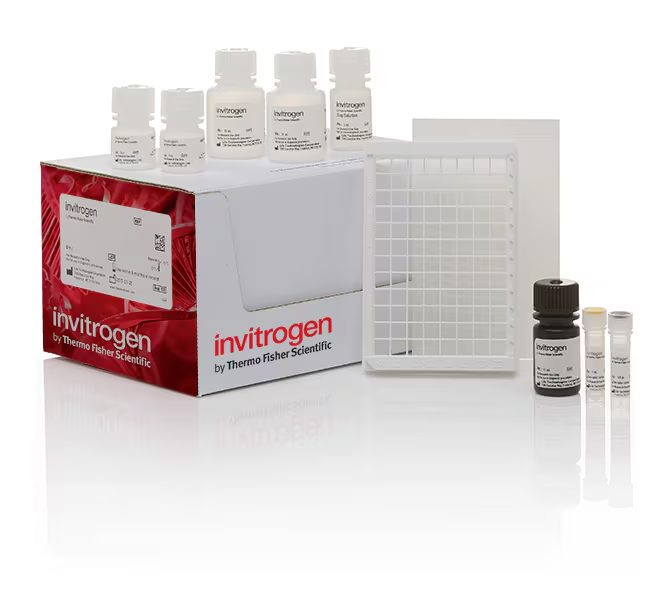
The PKA Activity research-use-only kit is a colorimetric activity assay designed for the quantification and detection of protein kinase A activity in cell lysates, tissue extracts and buffer samples.
This complete, ready-to-use kit includes a PKA substrate-coated 96-well plate(s), PKA standard (5,000 U), phospho-PKA substrate antibody, and other components to perform the assay. A 96-well microplate reader capable of reading optical density at 450 and 650 nm is required for use of this kit.
Performance characteristics
• Assay type: colorimetric activity kit
• Sample types: cell lysates, tissue extracts, buffer samples
• Sensitivity: 0.037 U/mL
• Standard curve range: 0.625–10 U/mL
• Reactivity: species independent
Background
PKA is a member of an important class of kinases, referred to as Arg-directed kinases or AGC-family kinases, that includes cAMP-dependent protein kinase (PKA or cAPK), cGMP-dependent protein kinase (PKG), protein kinase C, Akt, and RSK. These kinases share a substrate specificity characterized by Arg at position 3 relative to the phosphorylated serine or threonine. The second messenger cyclic AMP (cAMP) activates PKA in mammalian cells and controls many cellular mechanisms such as gene transcription, ion transport, and protein phosphorylation2. Inactive PKA is a heterotetramer composed of a regulatory subunit (R) dimer and a catalytic subunit (C) dimer. In this inactive state, the pseudosubstrate sequences on the R subunits block the active sites on the C subunits. PKA shares substrate specificity with Akt (PKB) and PKC. Substrates that present this consensus sequence and are phosphorylated by PKA are Bad (Ser155), CREB (Ser133), and GSK-3.
PKA has been implicated in numerous cellular processes, including modulation of other protein kinases, regulation of intracellular calcium concentration, and regulation of transcription. Transcriptional responses to increased cAMP occur through activation of the cAMP response element–binding protein (CREB), cAMP response element modulator (CREM), and activating transcription factor 1 (ATF1). Each of these transcription factors contains a kinase-inducible domain containing a conserved site for phosphorylation by PKA.
Assay principle
The PKA activity kit is designed to quantitatively measure PKA activity in a variety of samples. A recombinant PKA standard is provided to generate a standard curve for the assay and all samples should be read off the standard curve. The kit utilizes an immobilized PKA substrate bound to a microtiter plate. Samples containing PKA will, in the presence of the supplied ATP, phosphorylate the immobilized PKA substrate. After a 90-minute incubation followed by a wash, a rabbit antibody specific for the phospho-PKA substrate binds to the modified immobilized substrate. An antibody specific for rabbit IgG labeled with peroxidase is also added to the plate to bind to the rabbit anti-phospho-PKA substrate. After a short incubation and wash, substrate is added and the intensity of the color developed is directly proportional to the amount of PKA in the samples and standards.
Related links
Learn more about ELISA kits
Learn more about other immunoassays
| Code | Description |
|---|---|
| EIAPKA | Catalog Number: EIAPKA |

